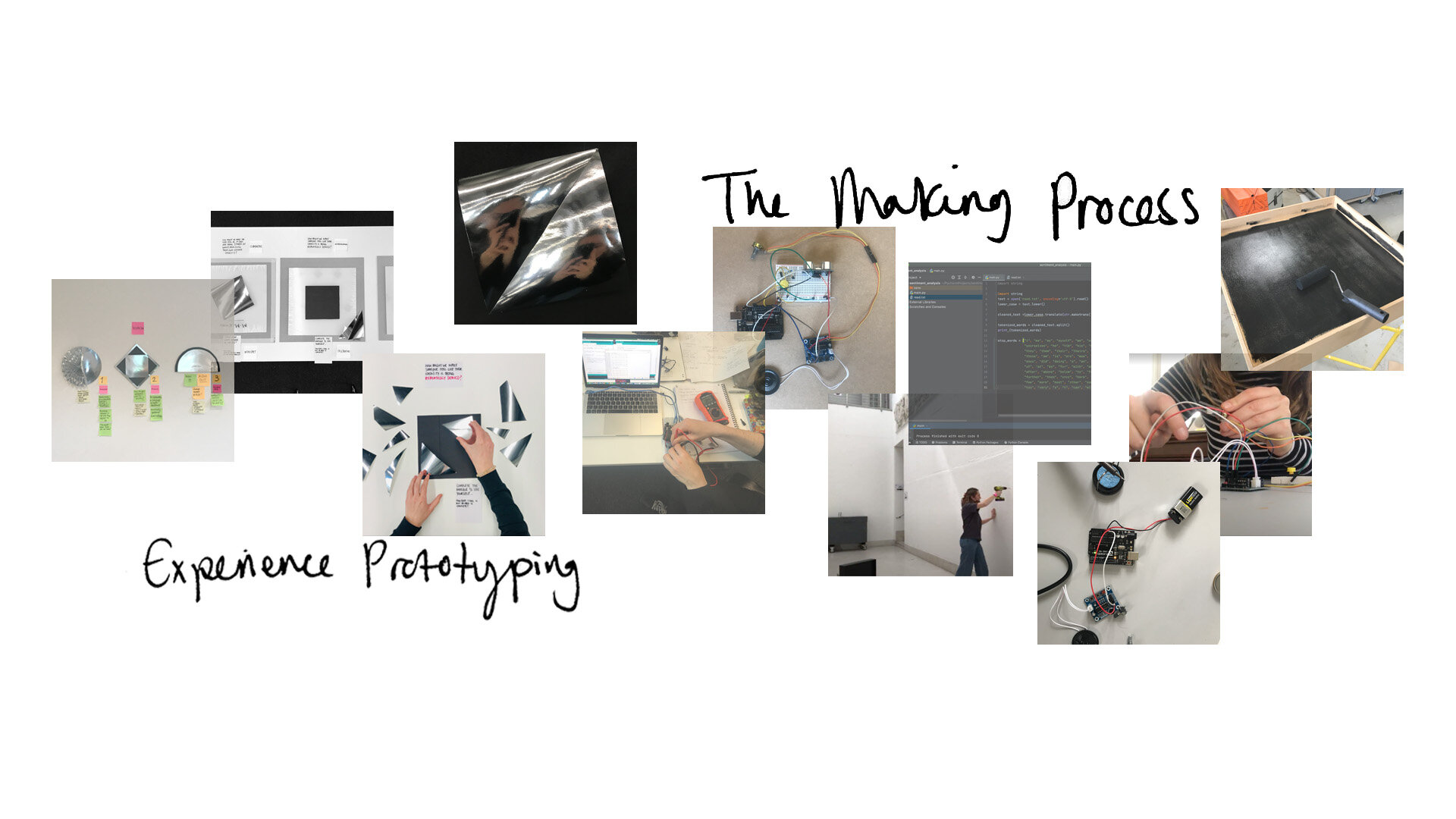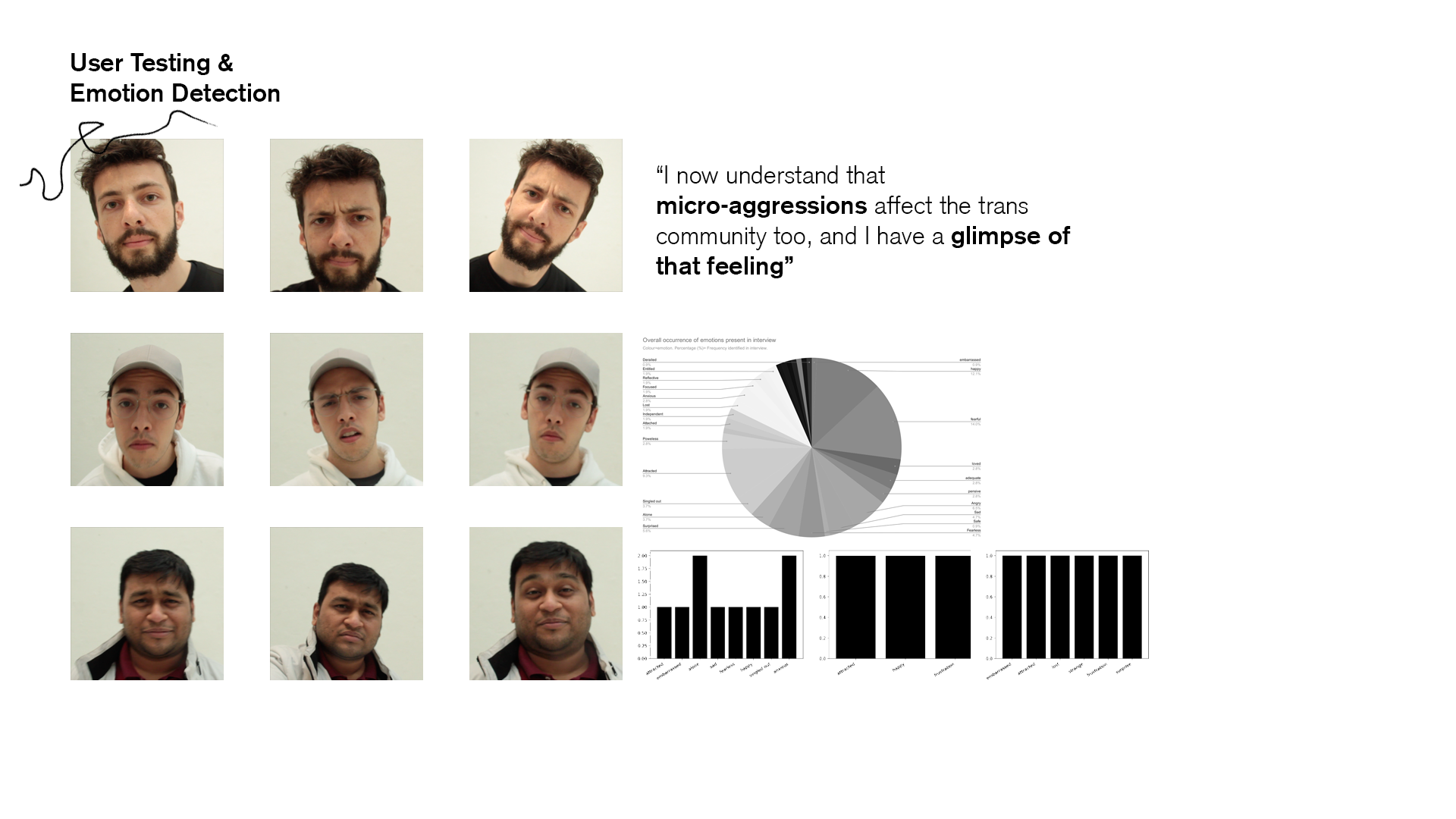
Beyond the Binary
Experiential design installation for trans inclusivity.
Royal College of Art & Imperial College London 2021
Final Major Masters Project: Participatory and Inclusive Design.
Context
Two in five trans people in the UK have experienced a hate crime in the last 12 months, a culture of micro-aggressions contribute towards this exclusion. Over the last 6 months, I had the pleasure of working with Transpire Southend UK; a trans support network group. Working collaboratively with 5 members of the group, correlations in experience occurred; manifesting in 3 themes of microaggressions. Through user research with the group, a comment stuck with me; “If only people knew how it felt to be trans, I think they would empathise more”. Beyond the Binary does just that.
The design reconceptualises these micro aggressions into designed interactions for the cis-gendered user to confront. Through abstract mirrors, frustration tasks and engaging pitch of voice changers, the user then contextualises the abstract emotions, through real trans stories. The experience uses emotion detection technology to prove that awareness has been raised and perception of trans issues changed.
Ultimately, Beyond the Binary is a tool to learn to unlearn the gender binary and transform perspectives for a more gender inclusive world.
The Design
Three interactions were designed to replicate micro-aggressions felt by the trans community. An experience was designed around these that included feedback and response from the audience, in order to gain a deeper sense of connection to the issue.






Participatory and Inclusive design practice
I am passionate about designing with and for people. For this project, I had the pleasure of working with a group of individuals from Transpire Southend, who both informed and gave creative input to the design process throughout. I believe this to be an essential part of design that is often neglected. Through continuous workshops, focus groups, interviews and iterative rounds of prototyping, the project was able to emanate the real concerns felt by the small group.

The Methodology
A methodology of reflection was developed to work between during the project. This was an iterative methodology, outlined below, that allowed for the voices of trans individuals to stand out. Due to the sensitive nature of the subject, and being a cis-gender woman myself, the reflective methodology allowed for objectiveness and the opportunity to recognise bias in the design.

Accuracy in reconceptualisation of the trans experience
Iterative rounds of experience prototyping were key to the projects success. My aim was for this to be an experience, something that gained the audience’s attention and therefore had the most likelihood of opening their eyes to the problem. I tested each interaction in various different ways, through paper models, in person run throughs and scaled models.

Testing on a small group of cis-gendered individuals
Experience and installation design is all about the human interaction in the design. These interactions had to be tested fully, not only to understand logistics of human behaviour, but to ensure accuracy in replication of the trans experience. This was tricky, and something that required full run throughs with a test group.
Not only was this to understand human interaction with the experience, but the aim of the project was to prove it. If I could prove to the audience that their feelings had been akin to that of the trans experience, my design hypothesis aimed to prove that this would deepen our connection with the trans experience and issues within the community.

How might we quantify emotion?
As stated previously, in order to test if my design would work, I measured people’s emotional response to each interaction. I did this through interview feedback, which was recorded and subsequently sent through sentiment analysis software on python. I augmented a simple code to identify the main emotions felt from my interviews with the trans community, as a basis of comparison. If each emotion was able to match up, I could conclude that the designs were accurate in emotion replication.

The Report
A full academic report was written, ultimately proving that the experience design had helped to improve awareness of the trans experience. Through sentiment analysis the project verified that similar emotions were present, however acknowledges that this should not be likened to the scale of trans individuals emotions.
The true value of experience and installation design was shown through this project, and has inspired my work as an inclusive designer for the future.
